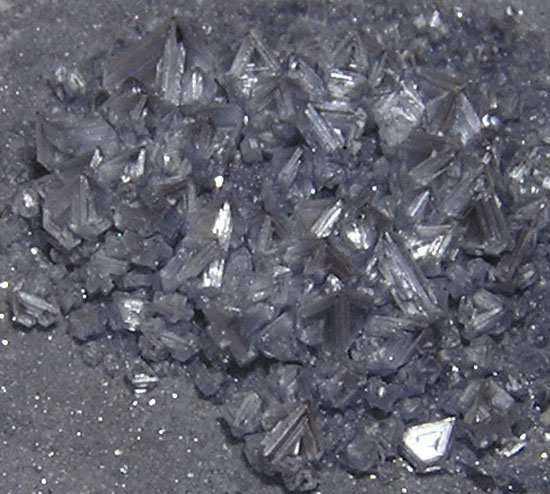123 Limiting Reagent and Percent Yield Section Review Answer Key
Learning Objective
- Calculate concentrations of solutions in molarity, molality, mole fraction and percent past mass and volume.
Fundamental Points
- Stoichiometry deals with the relative quantities of reactants and products in chemical reactions. It can exist used to find the quantities of the products from given reactants in a balanced chemic reaction, as well as per centum yield.
- To calculate the quantity of a product, calculate the number of moles for each reactant. Moles of a production are equal to the moles of a limiting reactant in ane-to-one reaction stoichiometry. To find production mass, moles must exist multiplied by the product's molecular weight.
- In stoichiometric calculations involving solutions, a given solution's concentration is often used as a conversion factor.
Terms
- stoichiometrythe study and calculation of quantitative (measurable) relationships of the reactants and products in chemical reactions (chemical equations)
- molaritythe concentration of a substance in solution, expressed as the number moles of solute per liter of solution
- molalitythe concentration of a substance in solution, expressed as the number of moles of solute per kilogram of solvent
Concentration of Solutions
Recollect that a solution consists of two components: solute (the dissolved material) and solvent (the liquid in which the solute is dissolved). The amount of solute in a given corporeality of solution or solvent is known as the concentration. The two most mutual means of expressing concentration are molarity and molality.
Molarity
The tooth concentration (M) of a solution is divers every bit the number of moles of solute (n) per liter of solution (i.e, the book, Vsolution):
[latex]Chiliad=\frac {north}{V_{solution}}[/latex]
The units of molarity are mol/L, often abbreviated as Yard.
For example, the number of moles of NaCl in 0.123L of a 1.00M solution of NaCl can be calculated as follows:
[latex]0.123 \text{ 50 of solution} \times \frac{ane.00 \text{ mole}}{ane.00 \text{ L of solution}} = 0.123 \text { moles NaCl}[/latex]
Molality
The molal concentration (g) of a solution is divers as the number of moles of solute (n) per kilogram of solvent (i.eastward., the mass of the solvent, grandsolvent):
[latex]g=\frac {n}{m_{solvent}}[/latex]
The units of molality are mol/kg, or yard.
For example, the number of moles of NaCl dissolved in 0.123kg of HiiO (the solvent), in gild to make a 1.00m solution of NaCl, tin be calculated as follows:
[latex]0.123 \text{ kg of solvent} \times \frac{1.00 \text{ mole}}{1.00 \text{ kg of solvent}} = 0.123 \text { moles NaCl}[/latex]
Reaction Stoichiometry in Solutions
We tin perform stoichiometric calculations for aqueous phase reactions just as nosotros tin for reactions in solid, liquid, or gas phases. Almost always, nosotros volition use the concentrations of the solutions as conversion factors in our calculations.
Example
- 123 mL of a 1.00 M solution of NaCl is mixed with 72.5 mL of a 2.71 Yard solution of AgNO3. What is the mass of AgCl(s) formed in the precipitation reaction?
First, we need to write out our balanced reaction equation:
[latex]AgNO_3(aq)+NaCl(aq) \rightarrow AgCl(s) + NaNO_3(aq)[/latex]
The adjacent footstep, as in whatever calculation involving stoichiometry, is to determine our limiting reactant. Nosotros tin practise this past converting both of our reactants into moles:
[latex]\text{123 mL }NaCl \times \frac{\text{1 L}}{\text{one thousand mL}} \times \frac{\text{ane.00 mol }NaCl}{\text{1 L}}= \text{0.123 mol }NaCl[/latex]
[latex]\text{72.v mL }AgNO_3 \times \frac{\text{ane L}}{\text{1000 mL}} \times \frac{\text{2.71 mol }AgNO_3}{\text{1 L}}= \text{0.196 mol }AgNO_3[/latex]
We can see from our reaction equation that AgNO3 and NaCl react in a 1:1 ratio. Because there are fewer moles of NaCl present in solution, NaCl is our limiting reactant. Nosotros tin now solve for the mass of AgCl formed:
[latex]\text{123 mL }NaCl \times \frac{\text{1 L}}{\text{thousand mL}} \times \frac{\text{ane.00 mol }NaCl}{\text{1 L}} \times \frac {\text{i mol }AgCl}{\text{1 mol }NaCl} \times \frac {\text{143 g}}{\text{1 mol }AgCl}=\text{17.6 g }AgCl[/latex],
Therefore, 17.vi g AgCl(s) is formed in the reaction.
To sum upwards: we converted to each reactant'south moles by using the given concentrations every bit conversion factors, expressing molarity every bit mol/L; once nosotros found our limiting reactant, we converted through to grams of AgCl formed.

Source: https://courses.lumenlearning.com/introchem/chapter/solution-stoichiometry/
0 Response to "123 Limiting Reagent and Percent Yield Section Review Answer Key"
Post a Comment